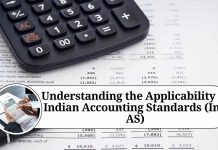Cost accounting is a branch of accounting that involves the process of collecting, analyzing, and reporting financial information related to the costs of producing goods or services. The primary objective of cost accounting is to provide management with accurate and reliable information to aid decision-making.
In cost accounting, various cost components are analyzed and recorded to determine the overall cost of producing a product or service. The following are the different types of costs shown in a cost account:
- Direct costs: Direct costs are those that are directly attributable to the production of a product or service. These costs can be easily traced to a specific product or service and are typically variable in nature. Examples of direct costs include raw materials, direct labor, and direct expenses.
- Indirect costs: Indirect costs are those that cannot be directly traced to a specific product or service. These costs are typically incurred for the benefit of the entire organization and are allocated to different products or services based on a predetermined cost allocation method. Examples of indirect costs include rent, utilities, insurance, and depreciation.
- Fixed costs: Fixed costs are those that do not change with changes in the level of production. These costs are incurred regardless of the level of output and include expenses such as rent, salaries, and depreciation.
- Variable costs: Variable costs are those that vary with changes in the level of production. These costs are directly related to the volume of output and include expenses such as raw materials and direct labor.
- Semi-variable costs: Semi-variable costs are those that have both fixed and variable components. These costs include expenses such as utilities, where a portion of the cost is fixed and a portion varies with changes in the level of production.
- Opportunity costs: Opportunity costs are the costs associated with the foregone alternative when one alternative is chosen over another. For example, if a company decides to produce product A, the opportunity cost of that decision is the revenue it would have earned if it had chosen to produce product B instead.
- Sunk costs: Sunk costs are costs that have already been incurred and cannot be recovered. These costs should not be considered when making future decisions since they are no longer relevant to the decision-making process.
In addition to the different types of costs, cost accounting also includes the concept of cost behavior. Cost behavior refers to how costs change in response to changes in the level of production or activity. Understanding cost behavior is essential for businesses to make accurate cost predictions and make informed decisions that can maximize profitability.
Important Aspect Of Cost Accouting
Another important aspect of cost accounting is the use of cost-volume-profit (CVP) analysis. CVP analysis helps businesses to determine the relationship between costs, volume, and profits. By analyzing the cost behavior of a business, CVP analysis can help management to identify the break-even point, the point at which revenue equals expenses, and to make decisions on pricing strategies, cost reduction initiatives, and product mix.
Cost accounting also involves the use of various tools and techniques such as budgeting, variance analysis, and activity-based costing (ABC). Budgeting involves the preparation of a financial plan that outlines the expected revenues and expenses for a specific period. Variance analysis is the process of comparing actual costs to budgeted costs to identify and analyze the causes of variances. ABC is a method of allocating indirect costs to products or services based on the activities that drive those costs.
Free Download Accounting Software
Final Conclusion
In conclusion, cost accounting provides businesses with vital information that can help to improve operational efficiency, control costs, and maximize profits. By understanding the different types of costs, and cost behavior, and using various tools and techniques, management can make informed decisions that lead to long-term success.
Other Related Blogs: Section 144B Income Tax Act
Q: What is cost accounting?
A: Cost accounting is a branch of accounting that involves the process of collecting, analyzing, and reporting financial information related to the costs of producing goods or services.
Q: Why is cost accounting important?
A: Cost accounting is important because it helps businesses to determine the true cost of producing a product or service. This information is essential for making informed decisions about pricing strategies, cost reduction initiatives, and product mix.
Q: What types of costs are included in cost accounting?
A: The types of costs included in cost accounting are direct costs, indirect costs, fixed costs, variable costs, semi-variable costs, opportunity costs, and sunk costs.
Q: What is cost behavior?
A: Cost behavior refers to how costs change in response to changes in the level of production or activity. Understanding cost behavior is essential for businesses to make accurate cost predictions and to make informed decisions that can maximize profitability.
Q: What is cost-volume-profit (CVP) analysis?
A: CVP analysis is a method used by businesses to determine the relationship between costs, volume, and profits. By analyzing the cost behavior of a business, CVP analysis can help management to identify the break-even point, the point at which revenue equals expenses, and to make decisions on pricing strategies, cost reduction initiatives, and product mix.
Q: What are some tools and techniques used in cost accounting?
A: Some tools and techniques used in cost accounting include budgeting, variance analysis, and activity-based costing (ABC).
Q: How can cost accounting help a business?
A: Cost accounting can help a business in many ways, including identifying areas for cost reduction, determining the most profitable product mix, and setting prices that maximize profitability. By providing accurate and reliable financial information, cost accounting can help businesses to make informed decisions that lead to long-term success.








